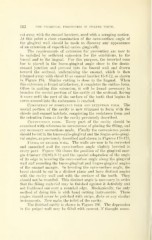Page 360 - My FlipBook
P. 360
162 THE TECHNICAL PKOCEDURES IN FILLING TEETH.
cut away with the enamel hatchets, used with a scraping motion.
At this point a close examination of the cavo-surface angle of
the gingival wall should be made to discover any appearance
of an extension of superficial caries gingivally.
The requirements of extension for prevention are now to
be satisfied by sufficient extension for the conditions, to the
buccal and to the ling-ual. For this purpose, the inverted cone
bur is placed in the bucco-gingival angle close to the dento-
enamel junction and pressed into the buccal wall and drawn
toward the occlusal, undermining the enamel, which is then
trimmed away with chisel 15 or enamel hatchet 15-8-12, as shown
in Figure 194. Similar cutting is done to the lingual. When
this extension is found satisfactory, it completes the outline form.
Often in making this extension, it will be found necessary to
broaden the mesial portion of the cavity at the occlusal, flaring
it more until the part of the surface of the tooth that begins to
curve around into the embrasure is reached.
Completion of resistance form and retention form. The
mesial portion of the cavity is now trimmed to form with the
chisels and enamel hatchets, completing the resistance form and
the retention form as for the cavity previously described.
Convenience form. Every part of the cavity should be
examined with reference to convenience of placing the filling, and
any necessary corrections made. Finally the convenience points
should be cut in the bucco-axio-gingival and the linguo-axio-gingi-
val angles, as previously described and shown in Figures 170-173.
Finish of enamel wall. The walls are now to be corrected
and smoothed and the cavo-surface angle slightly beveled in
every part. Figure 195 shows the position of the gingival mar-
gin trimmer 20 (80) -9-12 and the special adaptation of the angle
of its edge in beveling the cavo-surface angle along the gingival
wall and rounding the bucco-gingival and linguo-gingival angles
of the enamel margin. In beveling the cavo-surface angle, the
bevel should be cut in a distinct plane and have distinct angles
with the cavity wall and with the surface of the tooth. They
should not be rounded. This distinct angle is necessary in order
that the filling material may be finished against it definitely and
not feathered out over a rounded edge. Mechanically, the only
method of doing this is with hand cutting instruments. These
angles should never be polislu^l with strips, disks or any similar
instruments. Now make the toilet of the cavity.
The finished cavity is shown in Figure 196. The de])ression
in the i)ulpal wall may be filled with cement, if thought neces-


